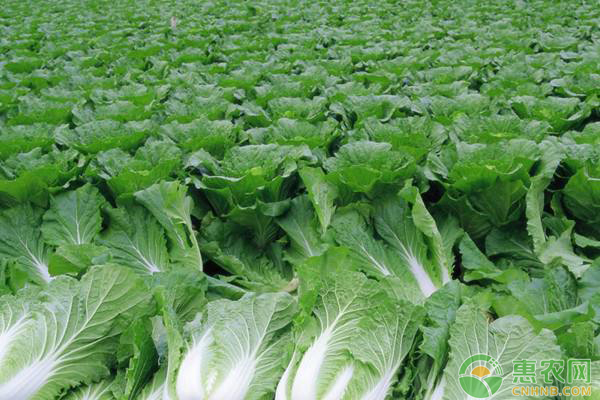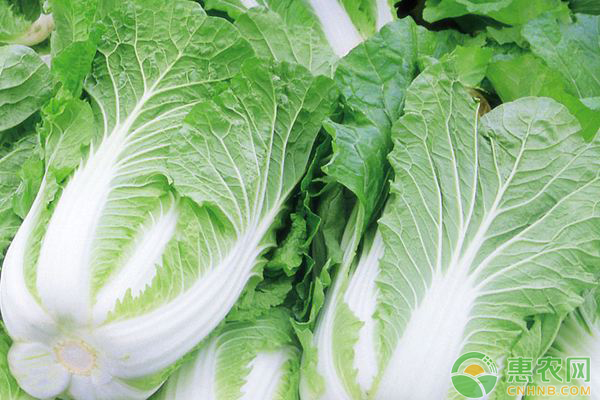If Chinese cabbage wants to achieve high-yield purposes, it must be scientifically and efficiently managed at all stages of growth. How to manage Chinese cabbage? And see the detailed high-yield cultivation techniques of Chinese cabbage.

Suitable seeding
The cultivation of Chinese cabbage is mainly cultivated in the middle and late maturing varieties in autumn, and is stored for consumption in winter. The sowing season of mid-late maturing varieties is more stringent in the northern region, and control is carried out after August 5th, August 10th to 15th. Choose varieties with strong disease resistance, good commercial properties and good yield performance, such as hybrid green tea. The seed can be sterilized by using 150 g of 100 g vegetable Fengning. Use strip or hole sowing, about 250 g per mu. Ditch the ridge, about 2 cm deep, soak the seeds evenly, then cover the soil about 1 cm, and immediately water.
2. Field management
2.1 Fertilization on the site.
The root system of Chinese cabbage is mainly distributed in the shallow soil layer. After the previous harvest, the ploughing is about 20 cm. It should not be too deep and flattened at the same time. Chinese cabbage has a large amount of fertilizer, and more base fertilizer should be applied. The base fertilizer is mainly organic fertilizer. Generally, more than 3 500 kg is applied per mu, 5 kg of urea is applied, 20 kg of superphosphate is used, and 10 kg of potassium sulfate is used. It is good to spread it and turn it into the soil. It can also be used as a implement.
2.2 Set seedlings and make up the seedlings.
The seedlings include: intercropping, seedlings and seedlings. When the seedling grows to the cross, the first seedling is carried out; the seedlings with abnormal or thin cotyledons are removed; the second seedlings are carried out in 2~3 leaves, leaving 3 to 4 robust seedlings per hole; the third seedling In the case of 5 to 6 leaves, leave 1 strain every 10~12 cm or 2~3 strains per hole. When the seedlings are planted, the seedlings are fixed according to the plant spacing, and the seedlings should be replenished in time for the broken ridges.
2.3 Water and fertilizer management.
Chinese cabbage has a longer growth period and higher yield, and has a larger demand for nutrients. Due to the different growth amounts in different periods, the demand for fertilizer and water is also different. Fertilization and watering often combine. During the germination period, the soil is kept moist. On the day of sowing, water is poured, the top soil is poured with water, and the water is poured into the water. When watering, it should not be flooded. Water is separately poured between the seedlings and the seedlings. The total demand for fertilizer is mainly nitrogen fertilizer in the early stage, combined with phosphorus and potassium fertilizer in the later stage, less nutrient absorption during seedling stage, significantly increased rosette period, and the most nutrient absorption during the core period. After the seedlings are applied, the seedling fertilizer is applied once, and 5 kg of urea is applied per acre to promote the growth of the seedlings. During the lotus sitting period, the root absorption capacity is increased, the transpiration is also increased, and more fertilizer and water are needed. The manure can be applied with 1 200~1 500 kg, or 30 kg of nitrogen, phosphorus and potassium compound fertilizer, plus 10 kg of urea per acre. 15 kg of superphosphate, fertilize a large amount of water after fertilization, and then carry out deep cultivating, and properly control the water. The demand for water and fertilizer during the balling period is also the most. During the core period, combined with watering, 20 kg of urea, 20 kg of superphosphate, 15 kg of potassium sulfate, and watering once every 10 d to keep the soil moist.
2.4 Other management
2.4.1 cultivating and weeding.
Chinese cabbage weeding and weeding combined with seedlings and seedlings for 2~3 times, the depth is 3~6 cm, so as not to hurt the roots.
2.4.2 Bunches of leaves.
Before the arrival of the first frost, the leaf ball is basically filled in real time, and the outer leaves of the Chinese cabbage are gathered together with a string, and the two-thirds of the leaf ball is bundled, mainly for the middle and late ripe varieties, to prevent freezing damage, so that the leaves The outer leaves of the ball soften, improve quality, and are easy to harvest and transport.
2.4.3 Harvest.
The harvest is too early, the leaf ball is not full, the yield is low, and it is not resistant to storage. If the harvest is too late, if the weather continues to cool down, it will cause freezing damage. According to the weather forecast, the harvest should be completed before the first frost, generally before the winter 3~4 d harvest.

3. Pest control
3.1 Soft rot.
Seed dressing with vegetable Fengning, 100 g per acre, seed disinfection of susceptible varieties and plots. Soft rot occurs mostly during the ball-forming period. In the late stage of the rosette, it is sprayed with streptomycin 200 mg/kg plus 0.5% potassium dihydrogen phosphate, sprayed once every 1 day, and continuously prevented for 2~3 times.
3.2 Virus disease.
At the seedling stage, the leaves are shrunk, the veins are necrotic, and the cabbage can be infested throughout the growth period. 20% of the virus A 500 times solution is sprayed at the beginning of the disease, once every 10 days, and continuously controlled 2 to 3 times.
3.3 dry heart disease.
Spraying 0.3% calcium chloride solution or 0.25%~0.50% calcium nitrate solution during the growth period can reduce the incidence of dry heartburn.
3.4 Pests.
Aphids, Pieris rapae, Plutella xylostella can be treated with 10% imidacloprid wettable powder, or lambda-cyhalothrin or fumigant wettable powder, or 1.8% avicin EC.
Puffed corn flour is a type of flour made from corn that has been puffed or expanded through a process of heat and pressure. The process involves heating the corn kernels until they become soft and moist, and then rapidly releasing the pressure, causing the kernels to puff up. The puffed corn is then ground into a fine flour that can be used in a variety of recipes. Puffed corn flour is often used as a gluten-free alternative to wheat flour in baking and cooking, and is also used in snack foods such as popcorn and corn chips. It is high in fiber and protein, and has a light, airy texture that makes it ideal for use in baked goods.
Puffed Corn Flour,Emulsifier Puffed Corn Flour,Hot Puffed Corn Flour,Feed Puffed Corn Flour
Jiangsu Chenwei Biology and Technology Co. LTD , https://www.cwsoybean.com